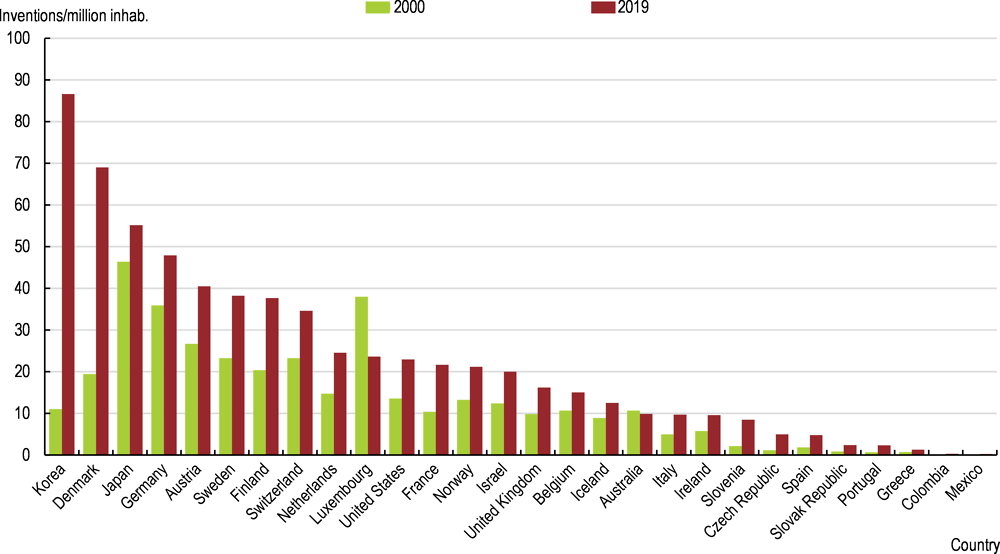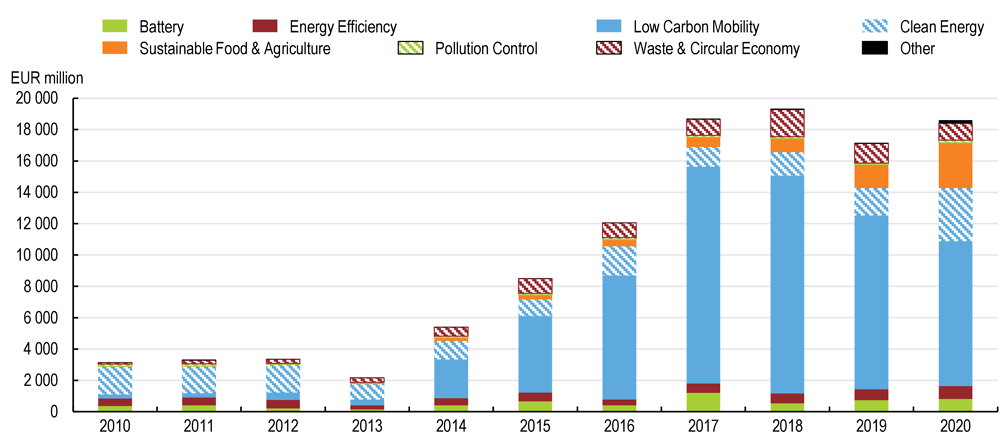At COP26, most countries updated their NDCs (Chapter 2). In addition to emission targets, countries also report the measures adopted or planned to achieve their mitigation commitments. As part of the preparation for the first global stocktake exercise, the UNFCCC compiled the principal measures reported by countries in their NDCs (UNFCCC, 2022[1]). For example, 91% of Parties communicated measures in the priority area of energy supply and 74‑82% identified measures in transport; land use, land-use change and forestry (LULUCF); buildings; agriculture and waste (Figure 21).
Despite its broad coverage, the UNFCCC synthesis report on Parties’ NDCs should be complemented by specific data on countries climate action. The UNFCCC report categorises countries’ declared climate actions in a fairly general manner, based on areas of action and self-reporting. However, it lacks granularity to monitor countries progress and a direct mapping of policies to their emissions base or an assessment of their level of stringency.
To support the UNFCCC reporting process, IPAC has carried out a detailed assessment of climate action for 51 countries and the EU. The Climate Actions and Policies Measurement Framework (CAPMF) draws on the UNFCCC effort to identify countries’ declared climate policies (UNFCCC, 2022[1]), but goes further by tracking which policies and policy instruments have actually been adopted and with what level of stringency. For example, it unpacks UNFCCC’s ‘renewable energy generation’ category, providing information on underlying policy instruments such as renewable energy support (feed-in tariffs, auctions, renewable energy portfolio standards) and carbon pricing (carbon taxes, emissions trading schemes).
The CAPMF quantifies empirically the adoption and the stringency of the policies adopted across countries providing essential information to monitor countries’ climate actions (Box 4). Policy stringency is defined as the degree to which climate actions and policies incentivise or enable GHG emissions mitigation at home or abroad. While policy coverage and policy stringency do not measure effectiveness, they are key first steps for its assessment.













